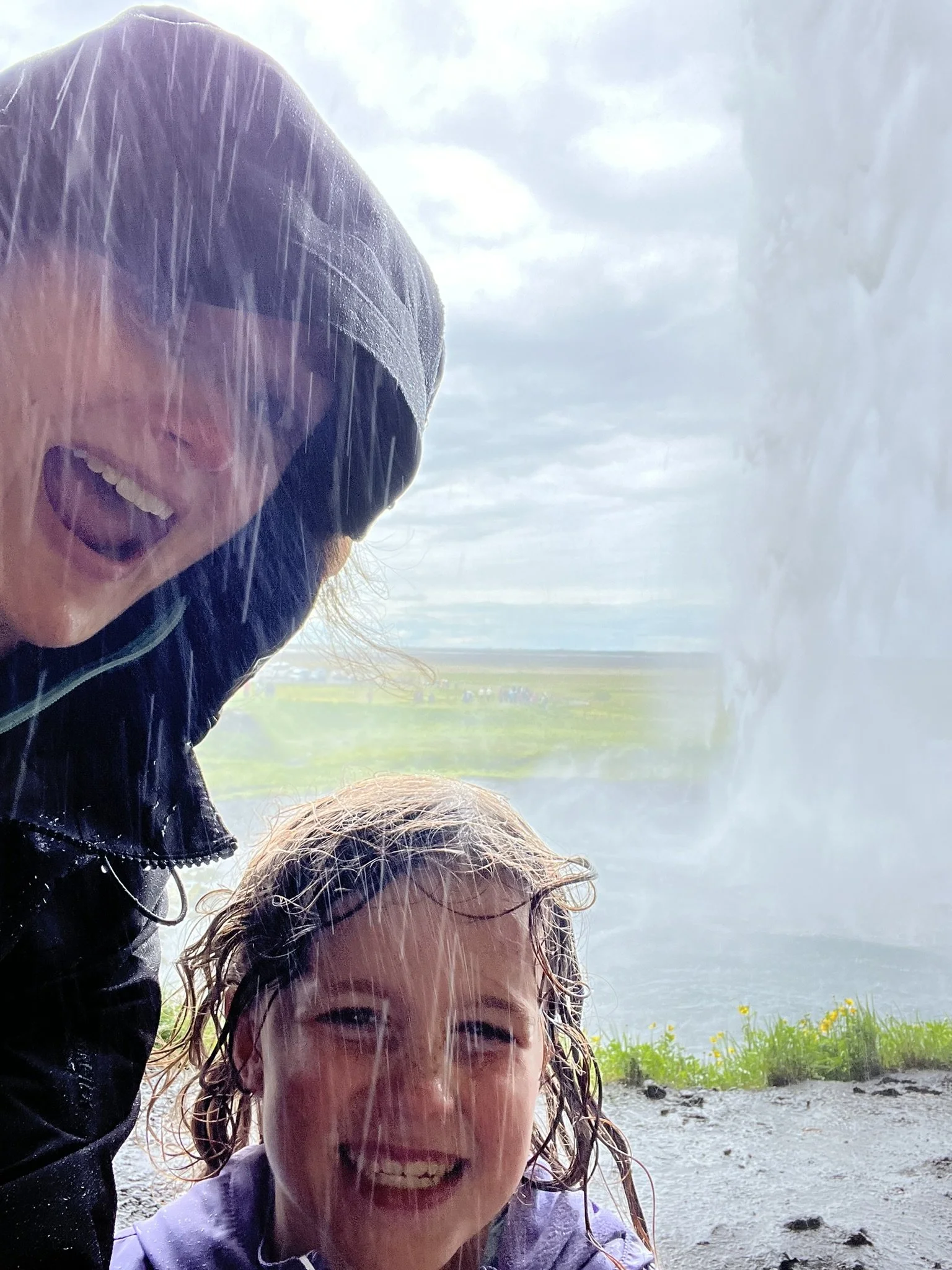Don’t Skip the Struggle
A few weeks ago, I had the rare opportunity to take my family on a trip to Iceland. It was stunning. The blue glaciers, crashing waterfalls, and volcanic beaches were so surreal they reminded me of my favorite boardgame, Space Park. But it wasn’t the scenery that left the biggest impression on me – it was the way my daughters threw themselves into the experience, despite the rain, wind, and cold. No hesitation, no complaints. Just pure curiosity. And they had the time of their lives!
You don’t see this stuff from the car.
One adventure in particular stood out. It was another rainy, cold, windy day that made the hotel hot tub seem particularly enticing. But our travel plans had us going by Reynisfjara Beach, famous for its black sand, which we didn’t want to miss. So we took a deep breath and plunged out of the car. And our willingness to get a little wet rewarded us with something far more magical than we expected. Puffins nesting in cliffs and zooming out over our heads. Intricate basalt patterns and caves to hide in from the rain. Giant sea stacks getting battered by the crashing sea. Ominous “sneaker waves” that chased us up the shore. We were fascinated by each new surprise.
The wonder didn’t come despite the discomfort – it came through it. Sure, this place would have been neat on pleasant day, but it wouldn’t have been this spectacular.
The Lure of Easy
We’re surrounded by tools and hacks that promise to make life easier and more comfortable. To save us from having to endure a minute of struggle. Whether in our home, school, or workplace, AI promises to be the ultimate lifehack. Whenever we’re stumped, we just ask it what we should do. AI offers a kind of seductive shortcut: instant analysis, instant content, instant next steps. Sure, it’s helpful. Sometimes it becomes a part of our process.* But it’s not the same thing as doing the thinking. And it’s that hard thinking that forms the backbone of Lean, a business philosophy proven to enable operational excellence and people development.
There’s a reason that even a super-smart chatbot can’t replace a clear-eyed operations leader who’s lived through six product redesigns, or a savvy bartender who totally makes a customer’s day, or a compassionate change agent who rallies the team. Those people carry hard-won insight and nuanced skills. They’ve wrestled with real challenges, learned from trial and error, and built up instincts that only come from experience.
Tools like AI can (and should!) make the technical problems easier – things like documenting meeting transcripts, looking up tax laws, and even performing routine tasks like scheduling. But if we start turning over the adaptive problems, too – like changing strategies, solving problems creatively, and navigating relationships – we risk atrophying the very muscles we most need to be innovative. We also miss out on the formative human experience of struggling through a challenge, and ultimately succeeding.
We lose the part of ourselves that grows through effort.
We Don’t “Do” Lean…We Become Lean
When a team starts a Lean journey, they’re usually drawn to the tangible results: faster processes, fewer defects, lower costs. It’s like the “black sand” advertised on the sign, and don’t worry, you’ll see it and be amazed. But what my clients discover – if they’re willing to face the rain for a bit – is something far more powerful than a singular result.
They find a shared language and approach for problem-solving. They learn how to spot opportunities in places no one had thought to look. They build the confidence to experiment, adapt, and keep going even when the answers aren’t clear. They come together as a team, through a shared journey. The eventually realize that the journey is the point.
The transformation doesn’t happen on a smartphone screen. There’s not an “app for that.” It happens in real conversations, messy experiments, and sometimes by just standing shoulder-to-shoulder in the metaphorical “storm” and taking the next step forward together.
It’s not always comfortable. But comfort isn’t the goal. Capability is.
You Can’t Build Muscle Without the Workout
I’m not saying we should seek pain for its own sake. No one wants friction or extra work where it’s unnecessary. That’s why we standardize workflows, automate reports, and use good tools – including AI – when they help alleviate the burden, without robbing us of learning.
But we also shouldn’t flinch from the discomfort that comes with engaging our brains in the hard stuff. Especially the kind that strengthens our thinking. Struggle isn’t failure; it’s actually a sign that we’re rewiring neurons. It’s how we figure out what works. It’s how we cultivate the ingenuity to respond in the moment. It’s how we build resilience – not just in processes, but in ourselves.
Think about lifting weights. If you never push beyond what's easy, your muscles don't grow. Same goes for your mind. The point is the training, not the one-time answer.
Trust me, it’s actually kind of fun!
Let’s Step Into the Rain
I’ve always said, “let’s make the easy things easy” – by removing waste, streamlining processes, and standardizing what works. But the reason is not so we can coast through our days like zombies, it’s so we can direct our attention to the new problems, the latest customer need, the next product line.
I’m not saying not to use tools, including AI. Just don’t hit the “easy button” before you do some thinking yourself.
Don’t mistake speed for insight, or comfort for progress. Don’t sidestep the messy conversations, the unfamiliar territory, or the awkward first attempts. That’s the good stuff. That’s where you grow your capacity – for creativity, for leadership, for calm under pressure.
Whether you're implementing Lean or navigating your own version of a windswept Icelandic beach, know this: the path to wonder often begins in discomfort. You’ve got to get out of the warm, dry car.
The struggle is real. But the struggle is necessary.
*Disclaimer: I use ChatGPT as part of my blog-writing process! But I struggle a lot, too 😊

